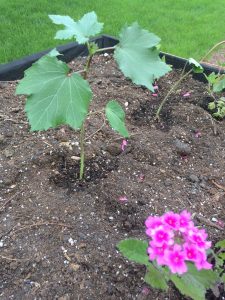Garden Column: Vijai Pandian, Horticulture Extension Educator
Garden Tips for Late Spring Season
For Wisconsin gardeners, late spring is probably the busiest time of the year where lawns being mowed twice a week, garden beds and containers are prepped and ready to be planted with annuals, fruit trees are about to be sprayed for pests, and not to miss the garden sales during the Memorial Day weekend. Here are some few tips that could enhance your successful start of your gardening season in late spring.
- Give a nutrient boost to your lawn
Mid to late May is the best time to schedule your first lawn fertilization for the growing season. Lawns are in their peak growing stage and will respond more effectively to nutrient application during this period. Use 1 lb. of nitrogen per 1000 square feet for sunny areas and ½ lb. of nitrogen per 1000 square feet for shaded areas. Select lawn fertilizers that contain at least 25-50% of slow release form nitrogen listed as water insoluble nitrogen or methylene urea in the fertilizer package label.
- Don’t forget to prune your dwarf conifers & boxwood
Late spring is the best time to prune your dwarf conifers like pine, spruce, and fir to maintain its compact size. On dwarf pines, pinch off ½ to 2/3 of the elongated terminal buds (candles) before it expands to full grown needles. On dwarf spruces and fir, prune back the branch tip to a lateral bud without leaving a stub and in early to mid-June, cut back 2/3 of the emerging needles to keep the bush more compact. Bleached leaves and twig dieback are a common plight of this year’s boxwood bush caused by winter burn/winter desiccation injury. If no signs of new growth or bud swelling happens by late spring, then prune off the dead twigs and stems or shear off desiccated leaves on the sides/top of the bush. If more than 50% of the boxwood bush shows severe twig and stem damage, then it is best to replace the bush.
- Harden your vegetable plants before planting outdoor
To toughen the tender vegetable transplants to outdoor conditions, begin the hardening process at least 10 days prior to planting. For the first three days, set them outside in a protected shaded area during daytime, and bring them back indoors every night. For the next three days, set them in a full sunny area, and bring them back indoors every night. On the seventh day and onwards, set the plant outdoors in a sunny area for all day and night. But keep an eye on the soil moisture, and don’t let the transplant wilt. By the tenth day, your transplant will be acclimated to the outdoor environment and will be ready for planting.
- Smart way to protect apples
Bagging apples can provide an effective alternative to pesticide sprays in preventing apple insect damage. About 10 days after petal fall, when the fruits are about a dime in size, use a zipper closure plastic bag to wrap around the fruit. First, staple the zipper one third of its way and insert the plastic bag over the fruit stem and zip it closed. To secure the bag tight, staple the zipper on the other side of the fruit stem. To prevent condensation inside the bag, make a ¼ inch cut on the bottom corners of the plastic bag. In an hour, you can bag 30-40 fruits.
- Blanket protection for tender plants
Fluctuating temperature in late spring is not uncommon for our region. To protect your warm season vegetables, flowering annuals, and blooming strawberries and blueberries from cold temperature injury, use a floating row cover (also called Reemay cloth) over the plants. A single layer of floating row cover can protect to a temperature as low as 29 degrees, and a double layer can further protect as low as 26 degrees. But make sure to remove the fabric during daytime when the temperature starts to rise.
For more gardening info or plant health related questions, contact us at:
Milwaukee County UWEX – 414-615-0515, email: planthealth.advisors@extension.wisc.edu




